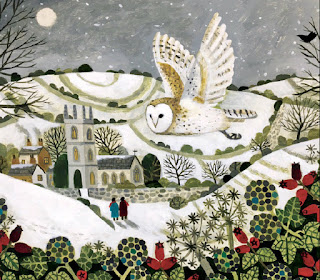Christmas Day

I shall begin with the First of these, his Incarnation, as most proper for this Solemn Time, which hath for many Ages been set apart for the commemoration of the Nativity and Incarnation of our B. Saviour: The Word was made flesh, that is, he who is personally called the Word, and whom the Evangelist St. John had so fully described in the beginning of this Gospel, he became Flesh, that is, assumed our Nature and became Man; So that by the Word's being made or becoming flesh the Evangelist did not intend that he assumed only a human Body without a Soul, and was united only to a human Body, which was the Heresy of Apollinaris, and his Followers, but that he became Man, that is, assumed the whole human Nature, Body and Soul. And it is likewise very probable that the Evangelist did purposely choose the word flesh, which signifies the frail and mortal part of Man, to denote to us that the Son of God did assume our Nature with all its infirmities, and became subject to the common frailty...
















